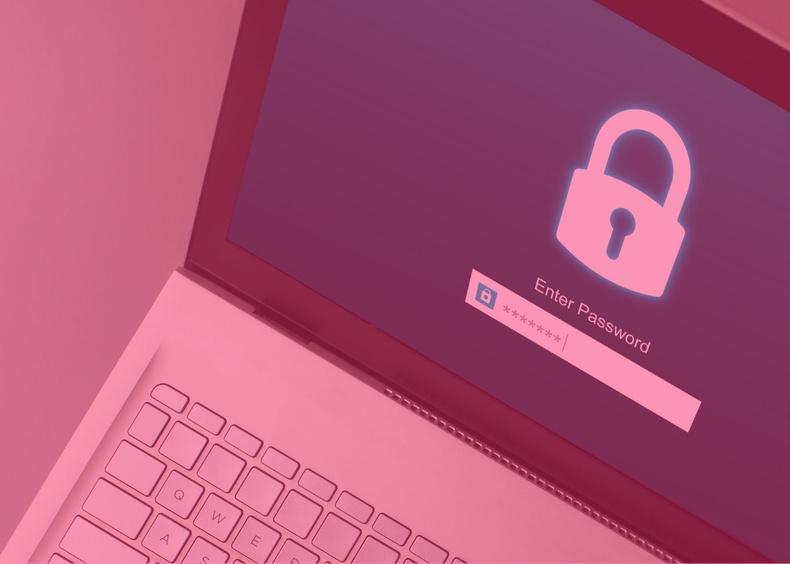Why you should never mix personal and work passwords

Written by the West Midlands Cyber Resilience Centre
Reusing passwords is one of the most common shortcuts people take online, and it’s also one of the most dangerous.
It might seem harmless to use the same login across a few accounts (and a bit more convenient to just remember the one!), but when personal and work passwords overlap, it opens the door to serious security threats.
If one of your personal accounts gets compromised, a hacker can use that same password to access sensitive company systems. This could lead to leaked data, breached networks, and a whole lot of damage to clean up.
Understanding the crossover risk
When personal and professional passwords overlap, they create a bridge between two worlds that should remain completely separate.
If a hacker gets access to a personal account, whether through a data breach, phishing scam, or malware, they’ll often test that same password on business logins.
And unfortunately, it works as many people have a tendency to reuse the same password or a similar variation of it.
This is exactly how credential stuffing attacks work.
Attackers take leaked usernames and passwords from past breaches and run them through automated tools to try logging into as many platforms as possible; email, file sharing systems, cloud dashboards, you name it.
If you've reused a personal password for work, you’ve just made their job much easier. The reality is that no matter how secure your company systems are, one reused password can undermine everything.
What reused passwords can cost
A few years ago, an employee at a mid-sized company was using the same password for an old gaming account and their work VPN. The gaming platform was breached in the spring.
The password, now floating around in a credential dump, caught the attention of an attacker who noticed the email associated with the account had a corporate domain.
They tried the same password on the company VPN, and it worked.
Over the next few weeks, they explored internal systems unnoticed. By early summer, client documents, financial records, and internal communications had all been copied and exfiltrated.
The breach cost the company hundreds of thousands in legal and recovery fees, and it all started with a password that had nothing to do with work. That’s how fast and quietly things can escalate.
Work-personal password best practices
Avoiding a disaster like that starts with strong habits. Here’s how to create a clear boundary between your personal and professional logins:
Use completely different passwords for work and personal accounts
Don’t just tweak one or two characters, you need completely different passwords. The National Cyber Security Centre (NCSC) suggests using three random words to create a password that’s both memorable and hard to guess.
For example: OceanLaptopTiger
Then throw in a few numbers or special characters, and you’ve got a strong, secure password. For instance: 0ceanLaptopT!ger7
Now apply this to your personal and work accounts to get something like:
Personal: BlueR!verTr33
Work: Ch@irD0gFlow3r
Each one is long, complex, and easy to remember, but clearly distinct. Hopefully we don’t need to say this, but please don’t use any of the examples above as your actual password! They’re purely here for educational purposes.
For more tips on creating strong passwords, you can check out our password guide.
Use a password manager
The easiest way to manage dozens (or hundreds) of unique logins is with a password manager. Many of them let you create different vaults, so you can store personal and work credentials separately and securely.
Never write passwords down or store them in plain text
That sticky note on your desk or notepad file on your desktop is a huge liability. Keep everything encrypted and backed up in a secure manager and lets please leave writing passwords down in the past.
Enable multi-factor authentication (MFA) wherever possible
Even if a password does get compromised, MFA adds a useful second barrier.
Policy and culture integration
It’s not just about individual behaviour either, companies also need to build password separation into their culture and policies.
Start by clearly stating in your IT policies that password reuse between personal and business accounts is not allowed.
This should be part of onboarding, reinforced in security training, and reviewed annually.
Ongoing cybersecurity training is also really important, as when employees understand why these rules exist (not just that they exist) they’re far more likely to follow them.
Also consider scheduling regular password audits or dark web monitoring to check for compromised credentials tied to company domains. If anything shows up, you’ll want to act fast.
Steps for teams and leaders
If you’re responsible for your team’s cybersecurity, or just want to do things right, taking these steps can make a real difference:
- Require unique passwords for all company logins.
- Provide employees with access to password managers and proper training.
- Set up systems to flag or prevent reused credentials.
- Offer regular cybersecurity refreshers and short, practical trainings.
- Use dark web monitoring services to catch leaked company credentials early.
Encourage employees to treat work credentials like company assets because that’s exactly what they are.
Final thoughts
Passwords might seem like a small thing, but they play a big role and can cause big problems when they’re not managed correctly.
Using the same ones for both personal and work accounts can quietly open the door to some serious problems. A hacked inbox or an old gaming account shouldn’t be the way into your company’s sensitive info.
The good news is keeping your passwords separate is easy. And with the right tools, managing them doesn’t have to be a hassle either!
Need some support with your organisation’s cyber security? Contact us todayâ¯to find out how we can help.
